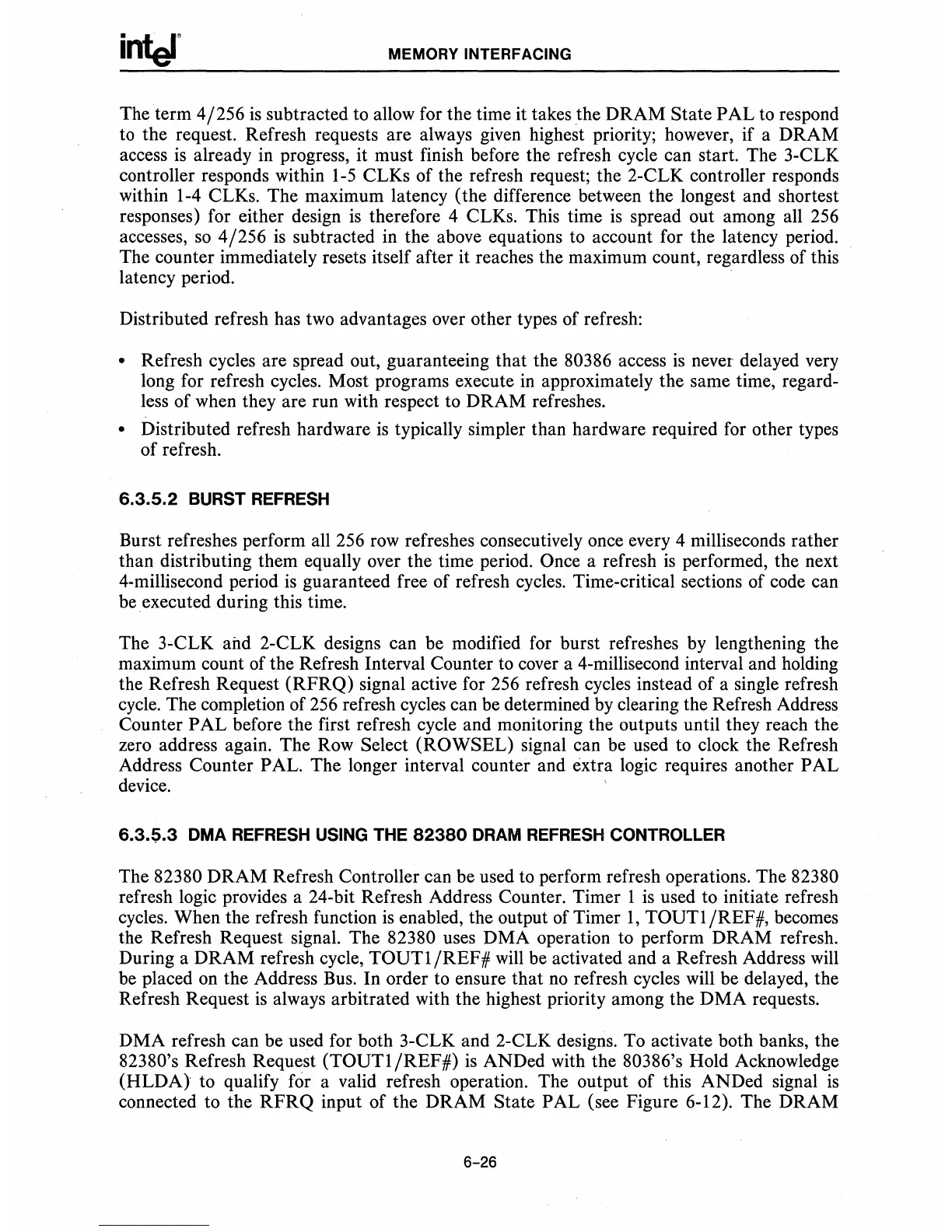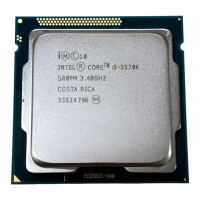MEMORY INTERFACING
The term
4/256
is
subtracted to allow for the time it takes
the
DRAM State PAL to respond
to the request. Refresh requests are always given highest priority; however,
if
a DRAM
access
is
already
in
progress, it must finish before the refresh cycle can start. The 3-CLK
controller responds within
1-5
CLKs of the refresh request; the 2-CLK controller responds
within
1-4
CLKs. The maximum latency (the difference between the longest and shortest
responses) for either design
is
therefore 4 CLKs. This time
is
spread out among all 256
accesses,
so
4/256
is
subtracted
in
the above equations to account for the latency period.
The counter immediately resets itself after it reaches the maximum count, regardless of this
latency period.
Distributed refresh has two advantages over other types of refresh:
• Refresh cycles are spread out, guaranteeing that the 80386 access
is
never delayed very
long for refresh cycles. Most programs execute
in
approximately the same time, regard-
less of when they are run with respect to DRAM refreshes.
• Distributed refresh hardware
is
typically simpler than hardware required for other types
of refresh.
6.3.5.2
BURST
REFRESH
Burst refreshes perform all 256
row
refreshes consecutively once every 4 milliseconds rather
than distributing them equally over the time period. Once a refresh
is
performed, the next
4-millisecond period
is
guaranteed free of refresh cycles. Time-critical sections of code can
be executed during this time.
The 3-CLK and 2-CLK designs can be modified for burst refreshes by lengthening the
maximum count of the Refresh Interval Counter to cover a 4-millisecond interval and holding
the Refresh Request
(RFRQ)
signal active for 256 refresh cycles instead of a single refresh
cycle.
The completion of 256 refresh cycles can be determined by clearing the Refresh Address
Counter PAL before the first refresh cycle and monitoring the outputs until they reach the
zero address again. The Row Select (ROWSEL) signal can be used to clock the Refresh
Address Counter PAL. The longer interval counter and extra logic requires another PAL
device.
6.3.5.3
DMA REFRESH USING THE
82380
DRAM
REFRESH
CONTROLLER
The 82380 DRAM Refresh Controller can be used to perform refresh operations. The 82380
refresh logic provides a 24-bit Refresh Address Counter. Timer 1
is
used to initiate refresh
cycles. When the refresh function
is
enabled, the output of Timer
1,
TOUTl
/REF
#,
becomes
the Refresh Request signal. The 82380 uses DMA operation to perform DRAM refresh.
During a DRAM refresh cycle,
TOUTl/REF#
will
be activated and a Refresh Address
will
be
placed
on
the Address Bus.
In
order to ensure that
no
refresh cycles will be delayed, the
Refresh Request
is
always arbitrated with the highest priority among the
DMA
requests.
DMA refresh can be used for both 3-CLK and 2-CLK designs. To activate both banks, the
82380's Refresh Request
(TOUTl
/REF
#)
is
ANDed with the 80386's Hold Acknowledge
(HLDA)
to qualify for a valid refresh operation. The output of this ANDed signal
is
connected to the
RFRQ
input of the DRAM State PAL (see Figure 6-12). The DRAM
6-26

